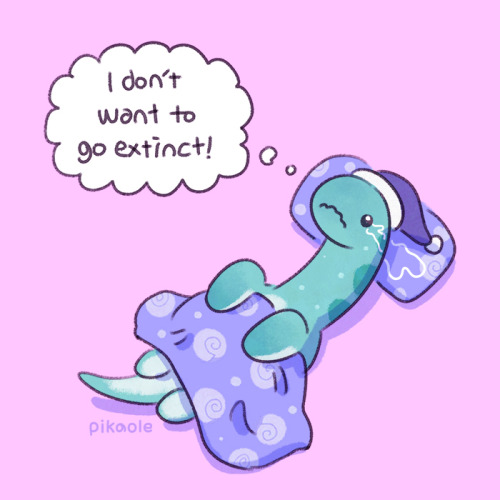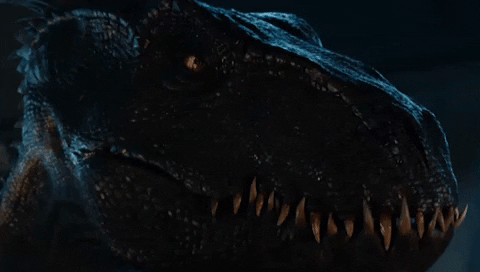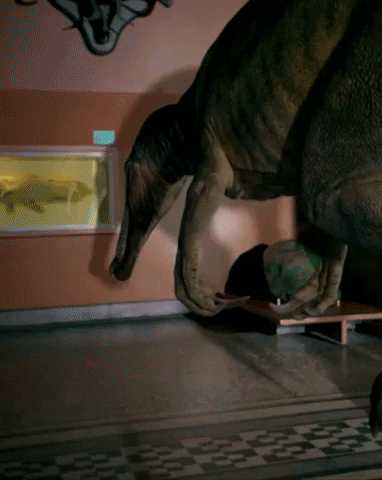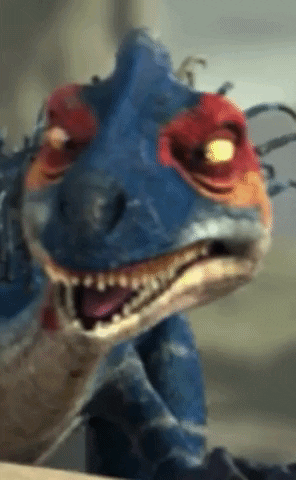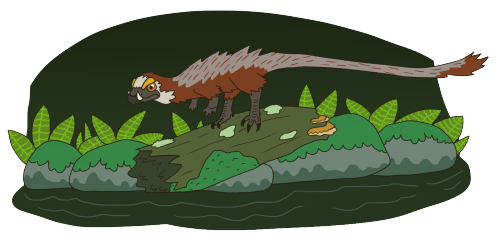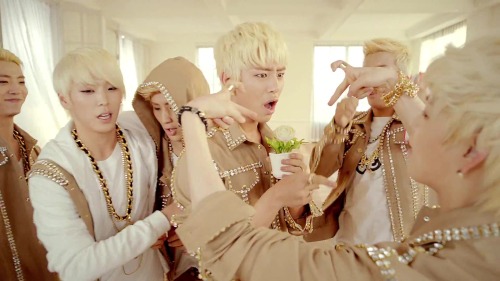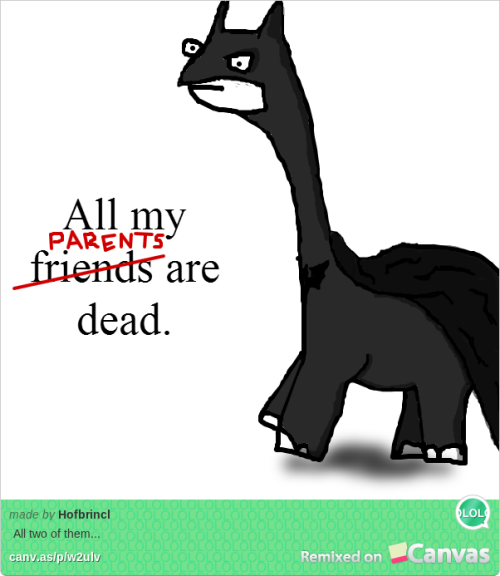#dinosaur

Dinosunday
Irritator
Temporal Range: Early Cretaceous, 110 Ma
Location: South America
Diet: Omnivore
Family: Spinosauridae

Dinosunday
Happy Memorial Day Weekend! Here is the official dinosaur of America’s capital to celebrate. To avoid confusion, this dinosaur has not been officially classified because the only fossil found was one vertabrae from one dinosaur. The classification is still under debate, and current information is subject to change if more fossils are found.
Capitalsaurus
Temporal Range: Early Cretaceous
Location: Eastern United States
Diet: Carnivore
Family: Undetermined

Dinosunday
Achillobator
Temporal Range: Late Cretaceous, 93-80 Ma
Location: Mongolia
Diet: Carnivore
Family: Dromaeosauridae

Dinosunday
Kosmoceratops
Temporal range: Late Cretaceous, 76.4-75.9 Ma
Location: North America
Diet: Herbivore
Family: Ceratops
Camptosaurus is the most populous species in all of Talenta. While not as diverse or large as the sauropods, they make a successful living by cleaning up after them. Behind the usual gamut of high-browsers which keep the trees from taking over the plains are bison-like herds of camptosaurus browsing on the mid-level vegetation left in their wake. The long, pillar-like legs of the sauropods make bending down an exhausting challenge, so they leave quite a bit for them. Herds can be up to 15,000 members strong and current estimates place the total number alive between 20 and 30 million. While very large and robust compared to cows and deer, they rely on these numbers against the myriad carnivores of Talenta. Allosaurs and Torvosaurus normally prefer sauropods but will double-back to hunt the smaller camptosaurs if need be. Near forests Ceratosaurus will not hesitate to deliver unseen strikes. But the most regular hunters are Marshosaurus and halflings. Smaller than the ginormous sauropods but still large enough to put up a fight, camptosaurus are the primary food-source for most nomadic halflings. Since time immemorial their life-cycles have been intertwined. When the wet season comes, halflings enter a period where hunting is taboo (unless in self-defense), to allow their prey’s numbers to rise once more. Their striped hides are adapted in almost anything made of leather, from tents to saddles to scrolls. Their nature as a facultative biped has also worked its way into their traditions. When going on two legs the camptosaurus is free-game, and when on four legs (normally done to eat or drink) it is considered worse. Its meat will be forever tainted because it was killed in the coward’s position. Hunting camptosaurus is the main method of food acquisition among halflings, also leading to dietary changes. Almost all of their flesh is red meat. Because of this, halflings have an incredibly high tolerance to red meat and usually do not see the health risks associated with it. Camptosaurus is not a domesticated animal, however. Though entwined in their life and death, halflings have never taken them from their herds to breed them. To their minds, it would be an undeserving fate. Hunted wild the beasts can prove their merit in combat. Halfling animal-worship places much importance on the dignity of their bestial neighbors.
Physically similar to camptosaurus, Uteodon is marked by few, noticeable quirks that make it unique. Somewhat larger than their cousins, they possess darker, duller hides and live lonesome lives. Uteodon do not live in herds. Instead they inhabit the forest edges, making equal use of the trees and mid-growing ferns. Halflings consider them to be the camptosaurus’ evil cousin because of their other major difference: their temperament. Uteodon rely on their size and bulk to dissuade predators, but sometimes they need a little extra help understanding. They will bowl over predators in blind charges regardless of whether or not they were looking at the herbivore. Only those too nimble to escape or too large to truly knock over are spared. Which includes the Talenta riders. When hunters see a Uteodon among a herd of camptosaurus, they consider it a bad hunting day. They know it will fight the hunters if they try to hunt anything near it. Smaller camptosaurus herds actively encourage the presence of a single Uteodon in their ranks to defend the rest. Offering a bull first-dibs on any food and water is likely to make it happen. Still, they are rowdy and cantankerous; it’s just as possible they’ll be driven from a herd for accidentally killing a calf. Uteodon-Camptosaurus hybrids are uncommon. They tend to be larger, with dark bodies and dark stripes, and inherit their Uteodon parent’s temperament, but with a better social instinct.
Well, that was a bit of a pause between this and the last Talenta fauna. Anyways, if it wasn’t obvious, Camptosaurus is at the top and Uteodon is at the bottom. Both references come from Scott Hartman. The poses are kind of lazy, but in my defense I haven’t drawn in like a week due to real life complications. With these done we have all of Talenta’s ornithopods (and heterodontosaurs). Where shall we be going next? Perhaps this image contains a hint ^-^
Post link
Fruitadens is an oddity among the Talenta biota, culturally and scientifically. Outside, the smallest of the herbivorous dinosaurs looks quite similar to their neighboring fastieth. Closer examination reveals some surprising features. Unlike the very similar Nanosaurus, Fruitadens has an almost complete covering of short, quill-like plumage. Especially on its proportionally long tail. The skull narrows to the jaws, showing a carnivore-like shape, with its famous heterodont dentition. The large lower canine is visible externally and serves as a reminder of its bite. Fruitadens are generalists, hanging around the wetlands and rivers in the wet season and falling back to the forests during the dry season. Plants and small animals of all kinds are eaten by the critters, and they have displayed remarkable intelligence in working out how to break open mollusc shells to get at the soft innards. Their pelts are predominantly reddish-brown with whites and greys, made up of stiffened quills ending in points. Like cats they can manually raise their pelts to seem larger and prickly. Prickly is a good word for them. Their eyebrow ridges give them a constantly peeved look, which fits with their behavior. Fruitadens act ornery to make up for their small size. They’re still much more likely to run than fight, but there are plenty of Talenta hunters who have been bitten for little more than accidental encounters. In their frail bones is a strong bite capable of nipping off fingers. Their attitude, appearance, and habitat of the forests of Talenta have earned them a bad reputation among the halflings, who regard them the same way the average Aundairan would regard a skunk, with a bite instead of a stink. They are not entirely without merit though. Their quills are sought after by the few scholars of the Plains as, in the absence of geese and swans and the normal sort of traveling traders, their quills are the only options for pens, and they make rather sturdy ones at that.
Post link
Nanosaurus make up the majority of the small, antelope-like positions in Talenta. They are not particularly social, but do hang around larger herbivores when eating or sleeping. They are the quickest and most perceptive of the fastieth. Killing one and wearing its pelt is considered a mark of a hunter’s speed and keen eye. Nanosaurs are jumpy like deer, able to leap about 6 feet in the air and out-speed any other fastieth by a country mile. Being able to outrun predators means these fastieth live all about the plains, dry and wet season. They make their presence known by their distinctive scent, somewhat like fish oil. Nanosaurs rarely go into the forests, where their feet are not so sure as on the flat ground. The single variety that does live in forests are smaller and quieter, with stout legs and demure pelts. During the dry season they breed, markedly different from other fastieth. They dig small foxholes with their back legs. Females with their sandy pelts hide in it and puff up the long, thin feathers on their back, disguising themselves as dry plants to protect the eggs. Several subspecies exist around the plains. One prefers the hilly, mountainous terrain around the Mror Holds and is adapted for cold climates. Another, larger one is even more adapted to the cold, sometimes encroaching on the fields of Karrnath. Those that live in the forests are noted above. The final is otherwise similar to the plains subspecies but is smaller and more brightly colored, with orange and blue facial markings in the males. Most males have slate gray plumage that may look black or blue depending on the lighting. They also have white marks, but these are unrelated to dryosaur masks. Females are a monochrome sandy color. But males actually have a better chance at evading predators. Their plumage is very different from their scaly back halves, making them look like two different animals stitched together. This throws off predators. Females don’t have such luck and are more likely to be spotted and hunted outside of the breeding season. So now a third, distinct gender is appearing in the plains subspecies, with females possessing male plumage, but not the elaborate orange dressings. They get the benefit of avoiding predators, but are often overlooked during mating. To fix this they often become aggressively flirtatious with males to get the idea across.
–
The idea was the male was being hunted, with a trap around its leg. Technically this is a recreation of the Jurassic Park Othnielosaurus, since Othnielosaurus and Drinker got lumped into Nanosaurus. Most of the scale and plumage references was taken from Kulindadromeus. How closely related it is to Nano is questionable, but in lieu of any other scale impressions it was the safest bet.
Post link
[id: a light green userbox with a pastel green border, and pastel green text that reads “this user loves their siblings! on the left is an image of a green dinosaur plush. /end id]
Post link
New fossils suggest that spinosaurus was fully aquatic, meaning we have to re-imagine this bigger-than-T. Rex dino’s looks and behavior. Video and article from National Geographic.
Wild Card, get your ass over here and fix the model of the Spino from Ark.
Post link

